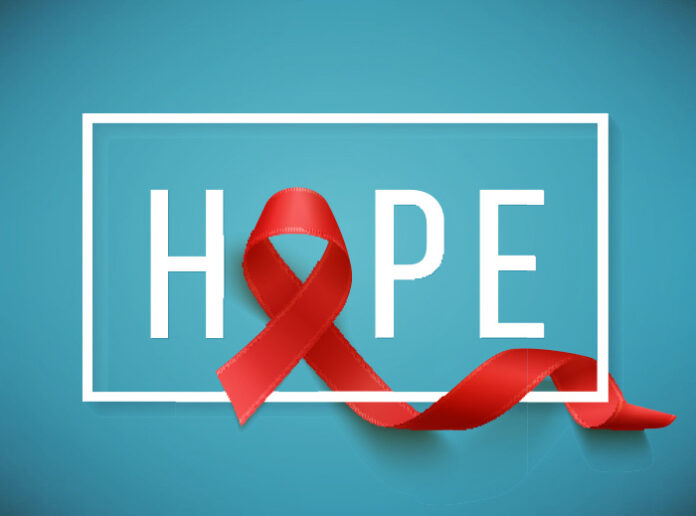Studimi i ri tregon një rast të dytë të faljes së suksesshme të HIV-it pas një transplanti të palcës kockore
Të paktën një milion njerëz vdesin për shkak të shkaqeve të lidhura me HIV çdo vit dhe pothuajse 35 milionë jetojnë me të HIV. HIV-1 (Virusi i imunitetit të njeriut) është përgjegjës për shumicën e infeksioneve HIV në mbarë botën dhe transmetohet përmes kontaktit të drejtpërdrejtë me lëngjet trupore të infektuara me HIV. Virusi sulmon dhe vret qelizat kryesore të sistemit tonë imunitar që luftojnë infeksionin. Nuk ka kurë për HIV-in. Aktualisht, HIV mund të trajtohet vetëm duke përdorur medikamente që kanë aftësinë për të shtypur HIV-in virus. These drugs have to be taken life long and it is challenging plus a cost burden on the health system especially in low-and-middle-income countries. Only 59 percent of patients of HIV worldwide are receiving Antiretroviral therapy (ARV) and HIV virus is fast becoming resistant from many known drugs which itself is a major concern.
Transplantimi i palcës së eshtrave (BMT) is a treatment used for leukemia, myeloma, lymphoma etc. Bone marrow, the soft tissue inside bones, makes blood-forming cells including the infection fighting white blood cells. A bone marrow transplant replaces unhealthy marrow with a healthy one. In the first case of successful HIV remission, an HIV-infected individual called ‘Berlin Patient’ who later revealed his name received a bone marrow transplant a decade ago when he was targeted to treat acute leukemia. He received two transplants along with total body irradiation which led to long-term HIV falje.
Në një studim të ri të botuar në Natyrë led by UCL and Imperial College London, the only second person has been shown to experience sustained remission from HIV-1 after a bone marrow transplant and stoppage of treatment. The anonymous adult male patient from UK was diagnosed with HIV infection in 2003 and was on antiretroviral therapy treatment since 2012. He was subsequently diagnosed with Hodgkin’s Lymphoma in the same year and he underwent chemotherapy. In 2016, he was given stem cell transplant from a donor who carried a genetic mutation which prevents expression of a most commonly used HIV receptor protein called CCR5. Such a donor is resistant to HIV-1 strain of the virus which specifically uses CCR5 receptor and thus the virus now cannot enter host cells. Since chemotherapy kills cells which are dividing, HIV could be targeted. From this understanding if one’s immune cells are replaced by cells which do not have CCR5 receptor, HIV can be prevented from rebounding after the treatment.
Transplanti u krye me efekte të vogla anësore si një ndërlikim i lehtë i zakonshëm në transplantet në të cilat qelizat imune të marrësit sulmohen nga qelizat imune të donatorëve. Trajtimi antiretroviral vazhdoi për 16 muaj pas transplantimit përpara se të vendosej për të ndërprerë trajtimin në mënyrë që të vlerësohej remisioni i HIV-1. Pas kësaj, ngarkesa virale e pacientit vazhdoi të mbetet e pazbulueshme. Pacienti qëndroi në remision pas 18 muajsh pasi terapia antiretrovirale u ndërpre pasi qelizat imune të pacientit nuk ishin në gjendje të prodhonin receptorin kryesor CCR5. Kjo kohëzgjatje totale është e barabartë me 35 muaj pas transplantimit.
This is a second case of a patient exhibiting sustained remission of HIV-1 following a bone marrow transplant. One important difference in this second patient being that ‘Berlin Patient’ had received two transplants along with total body irradiation while this UK patient received only a single transplant and underwent less aggressive and lesser toxic approach of chemotherapy. Mild complications of similar nature were seen in both patients i.e. graft versus host disease. Achieving success in two different patients points towards developing strategies based on preventing CCR5 expression which might even cure HIV.
Authors state that they are monitoring the patient’s condition and cannot say with affirmation yet if he has been cured of HIV. This may not be a generalized appropriate treatment for HIV because of adverse effects and toxicity of chemotherapy. Also, bone-marrow transplants are expensive and carry risks. Nevertheless, it is a better approach with reduced intensity conditioning and no irradiation. Research could also focus on knocking out the CCR5 receptor using gene therapy in people with HIV.
***
{Mund të lexoni punimin origjinal kërkimor duke klikuar lidhjen DOI të dhënë më poshtë në listën e burimeve të cituara}
Burimi (s)
1. Gupta RK et al. 2019. Remisioni i HIV-1 pas transplantimit të qelizave staminale hematopoietike CCR5Δ32/Δ32. Natyra. http://dx.doi.org/10.1038/s41586-019-1027-4
2. Hütter G. et al. 2009. Kontrolli afatgjatë i HIV nga Transplantimi i qelizave staminale CCR5 Delta32/Delta32. N Engl J Med. 360. https://doi.org/10.1056/NEJMoa0802905
3. Brown TR 2015. I Am the Berlin Patient: A Personal Reflection', Hulumtimi për AIDS dhe Human Retroviruses. 31 (1). https://doi.org/10.1089/aid.2014.0224






































